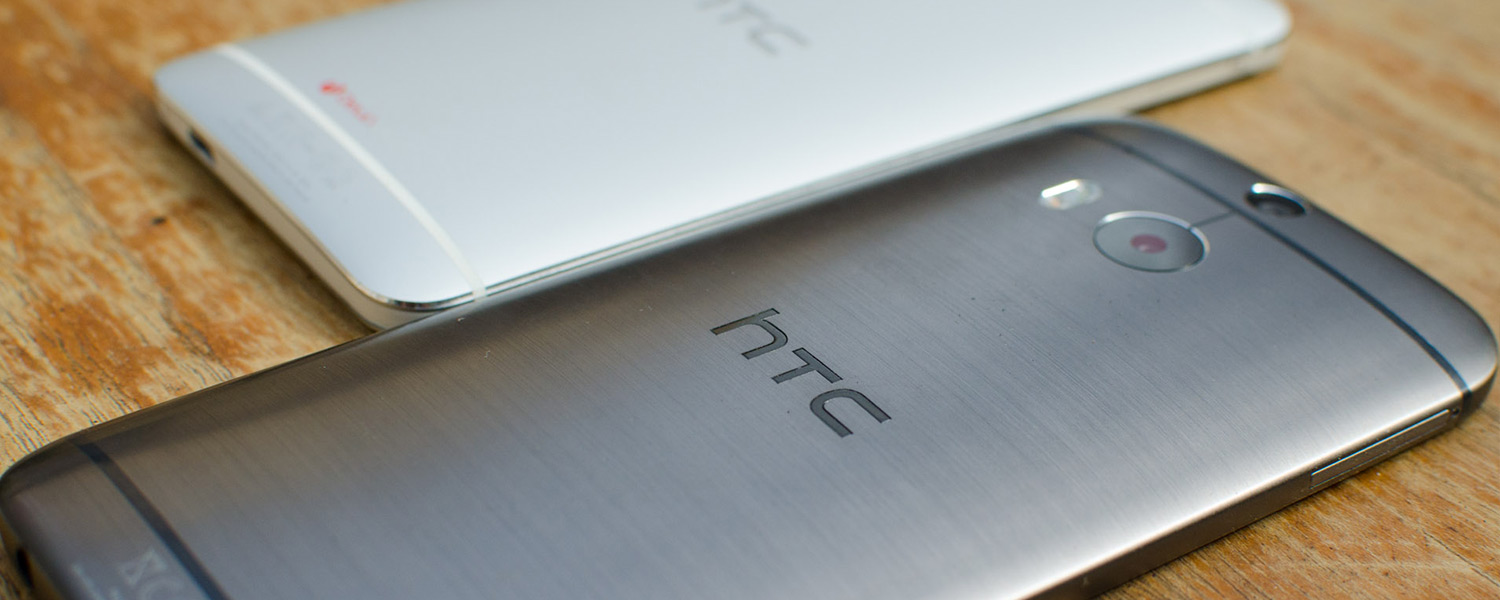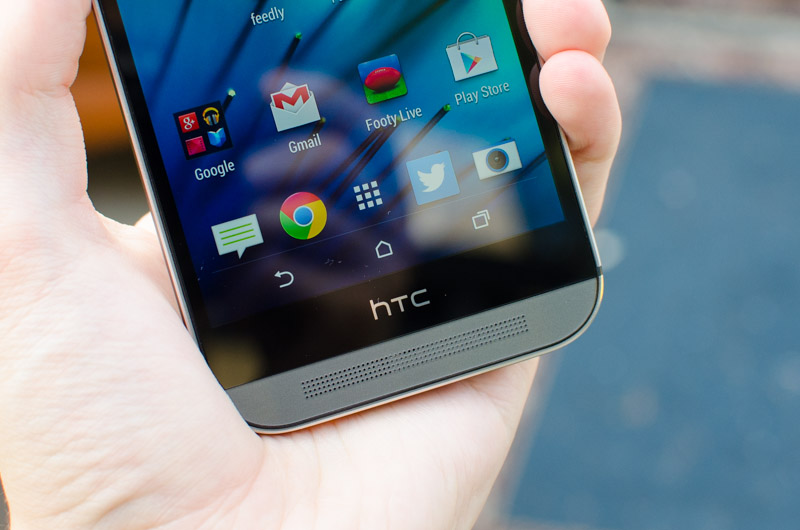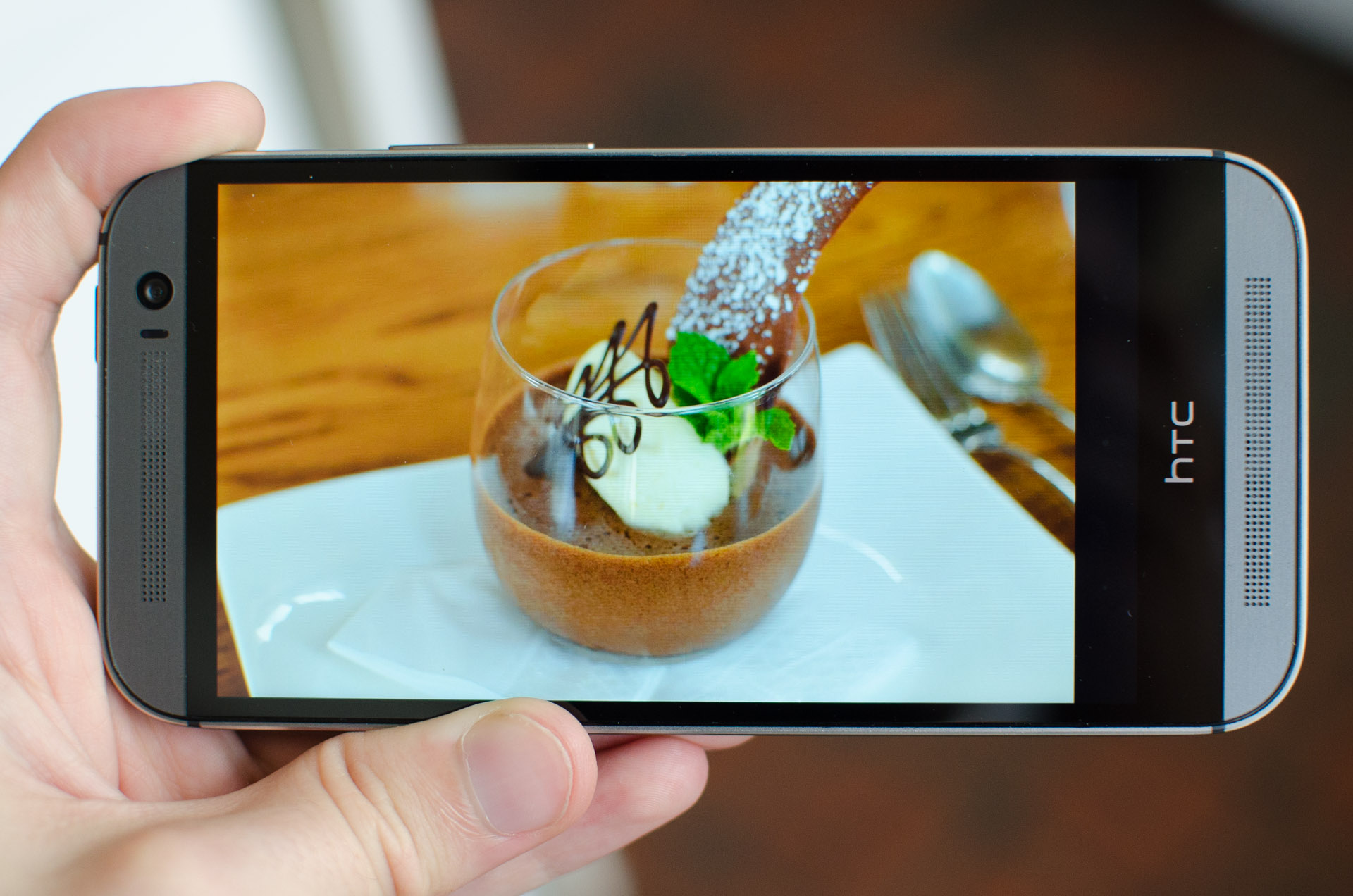Display: Super LCD 3 Returns
On the HTC One (M8) the company has gone for a 5.0-inch Super LCD 3 (IPS Pro TFT LCD) panel with a resolution of 1920 x 1080. As the display uses LCD technology, there's no fancy subpixel matrix to deal with, instead we're left with the tried and true RGB matrix. With total screen area of 68.9 sq. cm packing 2.07 million pixels, the display has a density of 441 pixels per inch (PPI).
If anyone is curious, it appears Japan Display Inc. manufactures the HTC One (M8)'s panel, which isn't surprising considering they also made the majority of the M7's displays. I wouldn't be shocked if this was the same display seen in the HTC Droid DNA and HTC Butterfly, but it could equally be an updated model. The touch controller is provided by Synaptics.
First off, as I mentioned earlier, HTC has switched from using capacitive hardware buttons to Android's onscreen buttons. In some respects, this offsets the increased display size, as a 5.0-inch panel with onscreen buttons takes the screen down to an effective 4.7-inches with a resolution of 1776 x 1080.
Android's onscreen buttons in Android 4.4 'KitKat' aren't as simple as they were in previous versions, though. Developers are no longer restricted to a black bar for the onscreen buttons; there's now an option to display content underneath a translucent navigation button bar, which is great for displaying upcoming content when scrolling through things such as BlinkFeed. There's also a new immersive mode, which can hide the buttons altogether where necessary.
These enhancements make the 5-inch display more flexible. When watching movies, playing games and reading books (all situations which use the immersive mode), you get more screen real estate on the M8 compared to the M7. In a smattering of other apps you'll see content underneath the buttons, and in the rest you'll be using around 4.7-inches of the display. Not to mention, the extremely useful Recent Apps button returns, providing fast access to the main multitasking interface.
5-inch 1080p displays are nothing new, but they continue to impress in terms of sharpness and clarity. The detail present when looking at images on the Super LCD 3 is fantastic, and you have the ability to watch Full HD videos natively. But the sharpness is most noticeable when viewing text on the display: there are no jagged edges around curved letters, and thin fonts such as Roboto look stunning with such a high pixel density.
When the HTC One (M7) launched at the start of 2013, the Super LCD 3 display it packed was unrivalled in display quality. Everything on it looked awesome yet balanced, and the viewing angles were the best I had ever seen. Now, it's more than a year later, and the competition has heated up with the release of the Apple iPhone 5s, LG G2 and Google Nexus 5, all which pack fantastic displays.
Like the M7, the Super LCD 3 display on the M8 looks awesome, but it no longer has a clear edge on the competition. Colors are well saturated and contrast is high, but the Nexus 5 and LG G2 appear to beat it on accuracy and overall gamut. You'll get deep blacks and bright whites from the HTC One M8's display as well, thanks to an even and strong backlight.
There are few layers between the display itself and the Gorilla Glass 3 that protects it, which helps cut down on reflections when trying to view the display in areas with strong backlighting. The screen can go quite bright where necessary, and automatic brightness adjustment is one of the most responsive I've seen.
The small gap between display and glass also provides viewing angles as astonishing as the original HTC One. You can easily view the One M8's panel from nearly every angle with very little change in brightness and virtually no shift in color. It really makes it feel like the software is running on the glass, rather than a projection from underneath.
The Synaptics-powered touchscreen is responsive and easy to use, although there is no glove mode that would boost the power of the electrostatic field so it can sense fingers through material. The feature has become popular since its inclusion in Nokia's Lumia line, but not a critical omission.






